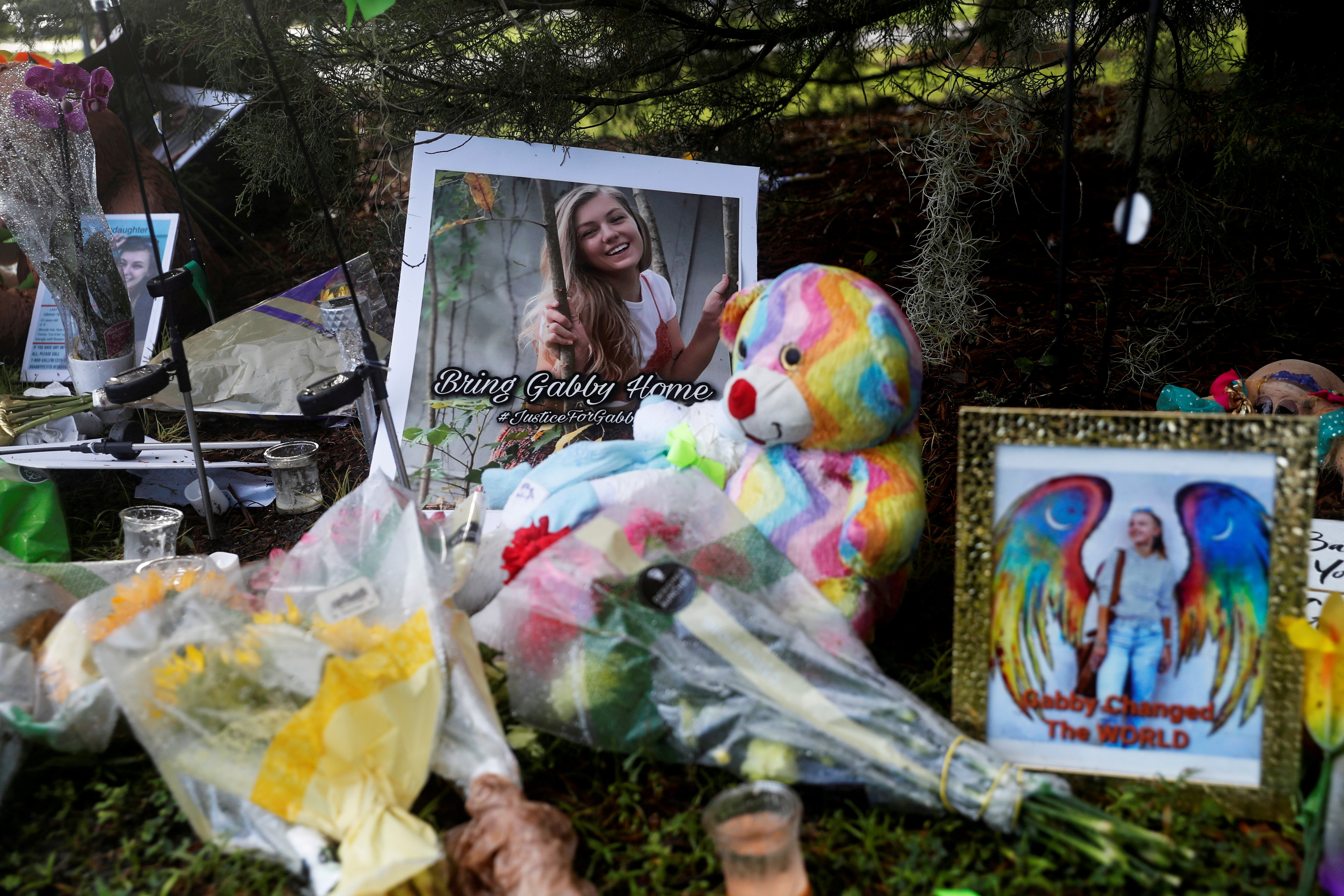How the media broke the news of Gabby Petito’s body being discovered
Sometimes it feels better not to be first with a ‘scoop’, says Andrew Buncombe


It is usually the case that journalists like to be first with the news.
Everybody loves a scoop. It’s good for you, it’s good for your news organisation and there is the quiet, sometimes smug satisfaction of having beaten your rivals.
Yet, we know, especially in the digital era, with the constant barrage of information being bombarded not just at the public but at journalists, there are real perils attached to this endeavour. Namely, that in the rush to be first, you end up getting things wrong.
That is bad for you, bad for your news organisation, and of course, gives your rivals the satisfaction of watching you have to write a correction or “clarification”.
There are some occasions that require journalists to be extremely careful, sensitive and cautious. One such event was the search last month in Wyoming’s Grand Teton National Park for missing YouTuber Gabby Petito.
The effort to locate the 22-year-old had centered on the Spread Creek campsite, 20 miles north of Jackson Hole, and the day I arrived dozens of FBI agents, park rangers and local police were methodically searching the hillside where the young woman and her boyfriend, Brian Laundrie, were believed to have camped.
The following day, a Sunday, after completing a piece about the revelation that a family had filmed the couple’s white Ford Transit van at that very location, proving they had been there, I drove back to the campsite to see if there were any developments.
There were. Plenty. A television reporter told me that only a few minutes earlier, a man had stopped his car just in front of the park rangers, who had shut off the road, and gestured to one of the waiting journalists.
“Where do you want me?” the man had asked, clearly mistaking him for a police officer. “I was told there’s a body you want me to have a look at.”
As he leaned into the car, the journalist noticed the man was wearing the badge of the Teton County Coroner’s Office.
The journalist had then gone and shared the information with a group of colleagues, who quickly realised this was potentially a huge development.
My phone had no signal, so I raced up the hillside, parked in the driveway of a ranch where people can pay to play at being cow wranglers, and called the editor on duty, thinking I had breaking news to impart. As it was, she was far ahead of me. She told me that several outlets were reporting a body had been found in the area where the FBI was searching for Gabby Petito, and that a coroner was at the scene.
We agreed we should put out the same news, albeit making very clear there was no confirmation that any body had been found, let alone that of Gabby Petito. After I hung up, the National Park Service press office called to say the FBI was shortly holding a press conference at the visitors’ centre. It was obvious it had something important to say.
Barely an hour later, FBI senior advisory agent Charles Jones broke the news that nobody wanted to hear. While there had not been a 100 per cent identification, remains found in the campsite were believed to be those of the young woman from Long Island.
“The cause of death has not been determined at this time,” said the agent. “We appreciate your continued support and patience as we work through this process.”
Using the visitor centre’s wifi, I wrote a new story, revealing what we had learnt and adding that an autopsy would be performed in the coming days. Shortly after the press conference, the young woman’s father, Joseph Petito, posted a photograph of his daughter standing in front of a mural showing angels’ wings.
“#GABBYPETITO she touched the world,” he wrote.
In the days that followed, we would learn the YouTuber had been strangled to death, and the search for her boyfriend would continue. (Laundrie’s remains have also now been found, in a nature reserve close to his home in Florida, where he told his parents he was going for a hike a month ago.)
“I felt safe because she was with Brian, and I felt like she would be OK,” her mother, Nichole Schmidt, told a television interviewer. “I thought he would take care of her.”
The media has, rightly, been criticised for its exhaustive coverage of the Petito case while ignoring incidents when women of colour, especially Native American women, disappear. Figures show that these women face violence at a far greater rate than white women, and yet those cases receive a fraction of the media attention.
Alongside that, there’s little doubt that the huge coverage in this case, which led people to post tips and important information on TikTok and Facebook, helped the FBI find Ms Petito’s remains in just eight days.
The FBI agent did not want to take questions that afternoon, but I asked how important receiving those tips had been. He said: “It was vital.”
Yours,
Andrew Buncombe
Chief US correspondent
Subscribe to Independent Premium to bookmark this article
Want to bookmark your favourite articles and stories to read or reference later? Start your Independent Premium subscription today.
Join our commenting forum
Join thought-provoking conversations, follow other Independent readers and see their replies
Comments